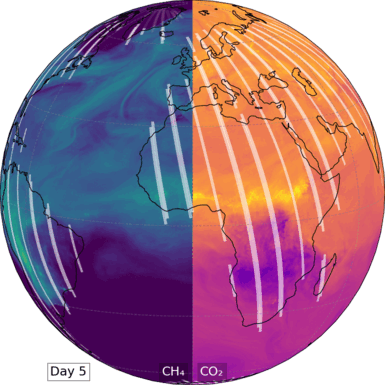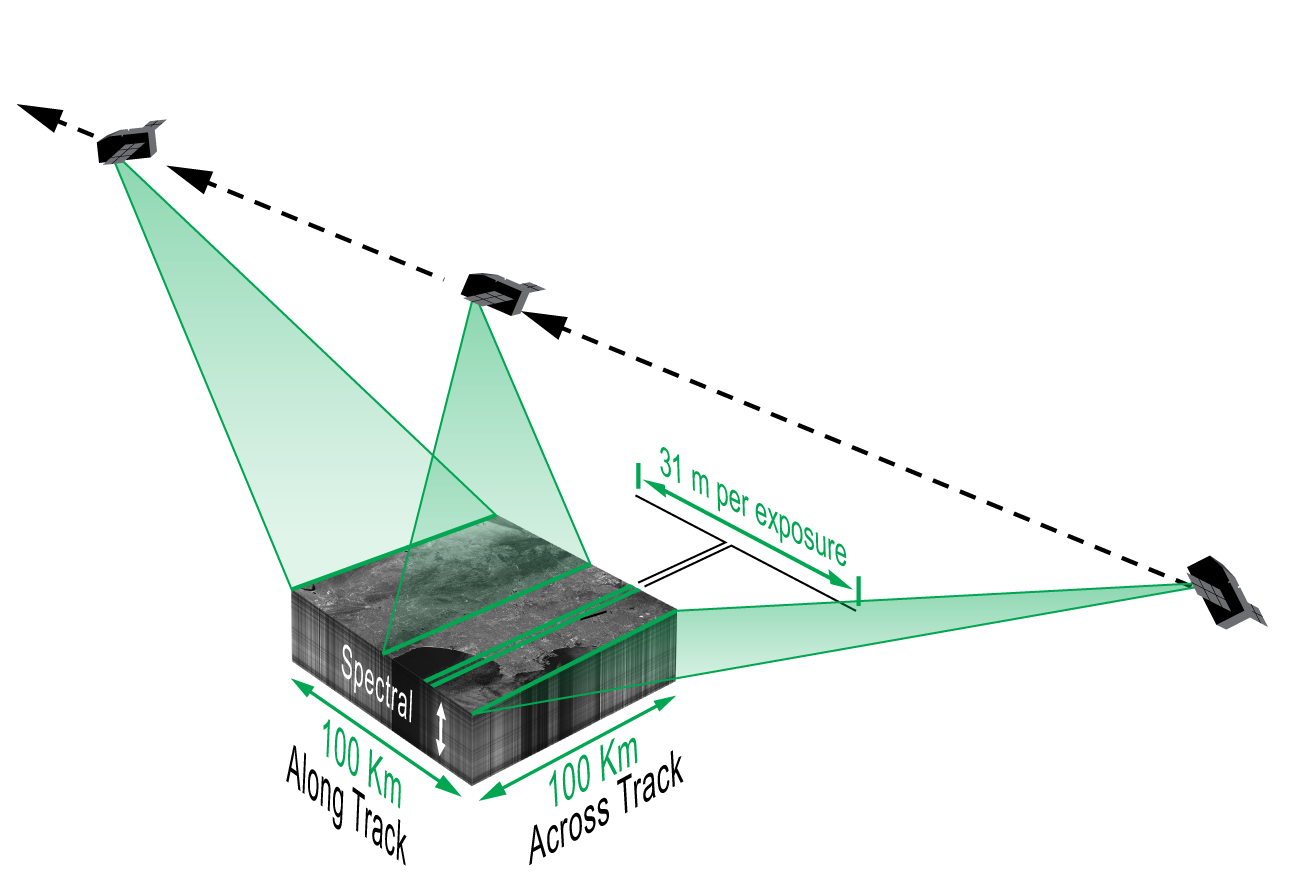Carbon-I
Carbon-I test…

A Phase A concept study selected by NASA in the Earth System Explorer mission proposal call.
The Carbon Investigation for High-resolution Mapping of Obscured Greenhouse Gases


A Phase A concept study selected by NASA in the Earth System Explorer mission proposal call.

In global mode, Carbon-I provides monthly land coverage at an unprecedented spatial resolution of <400m. This enables global flux inversions while also allowing us to detect point sources (including the infamous unknown or know unknowns). Sampling the tropics is of particular importance as those regions are the achilles heel of current satellites.
Zooming in, it allows us to see even finer details and how a 300m resolution will allow us to observe the fine-structure of clouds.
In target mode, Carbon-I collects higher-resolution (<50m) measurements over specific areas of interest. This approach is particularly useful for fine-scale analyses of emission hotspots, local sources, or dynamically changing ecosystems. By focusing on tighter grids, the mission can detect small-scale spatial variations and improve flux estimates in critical regions, complementing the broader but coarser observations from global mode.
Here, we zoom into the Los Angeles Area …
More to follow


---
title: "Carbon-I"
format:
closeread-html:
css: styles/other-background.css
#css: styles/cr-tufte.css
remove-header-space: true
code-tools: true
image: /img/Logo-Black.png
description: Carbon-I test...
#mainfont: 'et-book, Palatino, "Palatino Linotype", "Palatino LT STD", "Book Antiqua", Georgia, serif'
cr-style:
narrative-background-color-overlay: transparent
narrative-background-color-sidebar: transparent
section-background-color: transparent
narrative-text-color-overlay: black
#narrative-font-family: 'et-book, Palatino, "Palatino Linotype", "Palatino LT STD", "Book Antiqua", Georgia, serif'
---
{fig-alt="" fig-align="left" width="80%"}
A Phase A concept study selected by NASA in the [Earth System Explorer](https://explorers.larc.nasa.gov/2023ESE/index.html) mission proposal call.
## The Carbon Investigation for High-resolution Mapping of Obscured Greenhouse Gases
<center>{fig-alt="Carbon-I global mode observations" fig-align="center" width="400"}</center>
::: cr-section
{{< spacer 50svh >}}
In global mode, Carbon-I provides monthly land coverage at an unprecedented spatial resolution of <400m. This enables global flux inversions while also allowing us to detect point sources (including the infamous unknown or know unknowns). Sampling the tropics is of particular importance as those regions are the *achilles heel* of current satellites. @cr-global
::: {#cr-global}

:::
Zooming in, it allows us to see even finer details and how a 300m resolution will allow us to observe the fine-structure of clouds.[@cr-global]{pan-to="50%,-10%" scale-by="3"}
::: {#cr-target}

:::
In target mode, Carbon-I collects higher-resolution (<50m) measurements over specific areas of interest. This approach is particularly useful for fine-scale analyses of emission hotspots, local sources, or dynamically changing ecosystems. By focusing on tighter grids, the mission can detect small-scale spatial variations and improve flux estimates in critical regions, complementing the broader but coarser observations from global mode. [@cr-target]
Here, we zoom into the Los Angeles Area ... [@cr-target]{pan-to="50%,-70%" scale-by="2.6"}
More to follow
:::